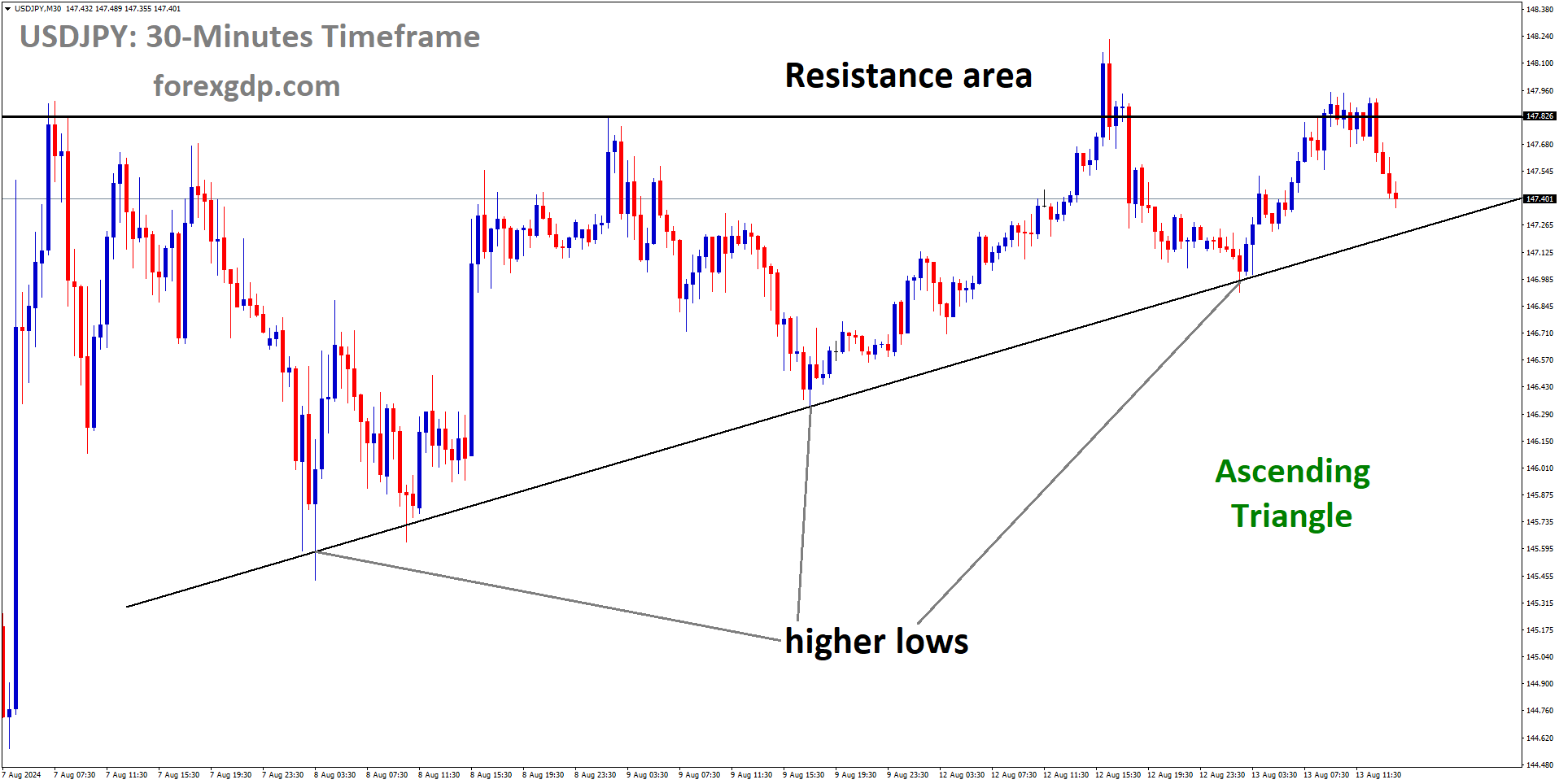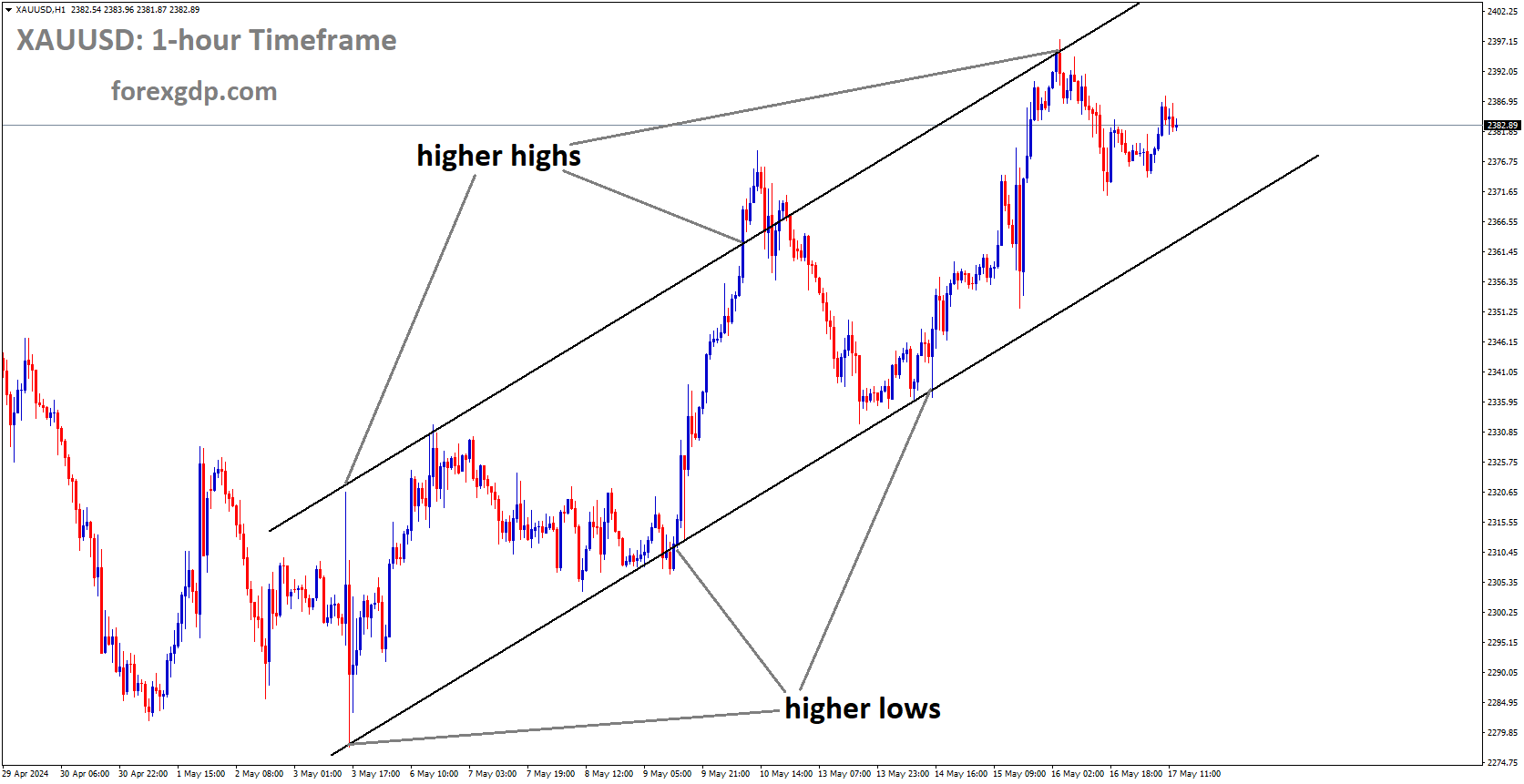USDJPY is moving in Ascending channel and market has reached higher low area of the channel
USD/JPY Gains Momentum as Japanese Yen’s Safe-Haven Appeal Fades
The USD/JPY pair has caught the attention of traders and investors alike as it climbs toward the 148.00 mark. This movement highlights the shifting dynamics in global financial markets, particularly the diminishing appeal of the Japanese Yen (JPY) as a safe-haven asset. Let’s dive into what’s driving this shift and what it could mean for the future.
Why is the Japanese Yen Losing Its Safe-Haven Status?
The Japanese Yen has long been regarded as a safe-haven currency, meaning it’s typically in high demand during times of global economic uncertainty. However, recent developments have led to a significant decline in this demand, causing the Yen to weaken and USD/JPY to rise. But why is this happening?

One of the primary reasons for the Yen’s decline is the changing sentiment around the U.S. economy. Just a few months ago, there were widespread concerns about a potential recession in the United States. These fears were fueled by disappointing economic data, including a weaker-than-expected Nonfarm Payrolls (NFP) report in July. This report initially caused concern as it suggested a slowdown in the U.S. labor market, leading investors to seek refuge in safe-haven assets like the Japanese Yen.
However, those recession fears have started to fade. A subsequent decline in Initial Jobless Claims for the week ending August 2nd provided a glimmer of hope, indicating that the U.S. labor market might not be as weak as initially feared. This shift in perception has led investors to move away from safe-haven assets and back into riskier investments, reducing demand for the Yen.
The Role of U.S. Inflation Data in Market Speculation
As the Yen’s safe-haven appeal fades, the focus has shifted to U.S. inflation data, which plays a crucial role in shaping market expectations for Federal Reserve (Fed) interest rate decisions. The next big piece of data on the horizon is the U.S. Consumer Price Index (CPI) for July, which is highly anticipated by traders and investors.

USDJPY is moving in Ascending Triangle and market has fallen from the resistance area of the pattern
Inflation data is particularly important because it influences the Fed’s decisions on interest rates. Currently, there’s a lot of speculation about when and how much the Fed will cut rates. Many market participants believe that the Fed could start reducing interest rates as early as September. However, there’s still a great deal of uncertainty about the size of these potential rate cuts.
One tool that traders use to gauge market expectations is the CME FedWatch tool, which tracks the probability of different rate cut scenarios. According to recent data, the likelihood of a 50 basis point (bp) rate cut in September is around 49.5%. This shows that while a rate cut is expected, the exact size is still up for debate.
What to Watch in the Upcoming PPI Data
In addition to the CPI, the U.S. Producer Price Index (PPI) data for July is another critical piece of the puzzle. The PPI measures the average change over time in the selling prices received by domestic producers for their output. It’s a key indicator of inflation at the wholesale level and can provide valuable insights into future consumer inflation trends.
Economists have mixed expectations for the PPI data. The monthly headline PPI is expected to show only a slight increase, indicating that inflationary pressures at the producer level may be easing. On the other hand, the core PPI, which excludes volatile food and energy prices, is anticipated to have grown at a slower pace of 0.2%, down from the previous month’s 0.4%. This deceleration suggests that inflationary pressures might be cooling off, which could impact the Fed’s rate cut decisions.
Furthermore, the annual headline and core PPI are estimated to have slowed down to 2.3% and 2.7%, respectively. These figures will be closely watched by traders as they assess the potential impact on the Fed’s policy decisions.
Final Thoughts
The USD/JPY pair’s recent surge to near 148.00 highlights the ongoing shifts in global financial markets. The Japanese Yen’s traditional role as a safe-haven currency is being challenged as investors grow more optimistic about the U.S. economy. At the same time, U.S. inflation data is playing a pivotal role in shaping market expectations for future Fed rate cuts.

As we look ahead, all eyes will be on the upcoming U.S. CPI and PPI data. These reports will provide critical insights into the state of inflation in the U.S. and could significantly influence the Fed’s decisions in the coming months. For traders and investors, staying informed and agile will be key to navigating these evolving market dynamics.
So, what do you think? Are we heading toward a new phase in the USD/JPY relationship, or is this just a temporary shift? Share your thoughts and stay tuned for more updates as the story unfolds.
Don’t trade all the time, trade forex only at the confirmed trade setups
Get more confirmed trade signals at premium or supreme – Click here to get more signals , 2200%, 800% growth in Real Live USD trading account of our users – click here to see , or If you want to get FREE Trial signals, You can Join FREE Signals Now!




